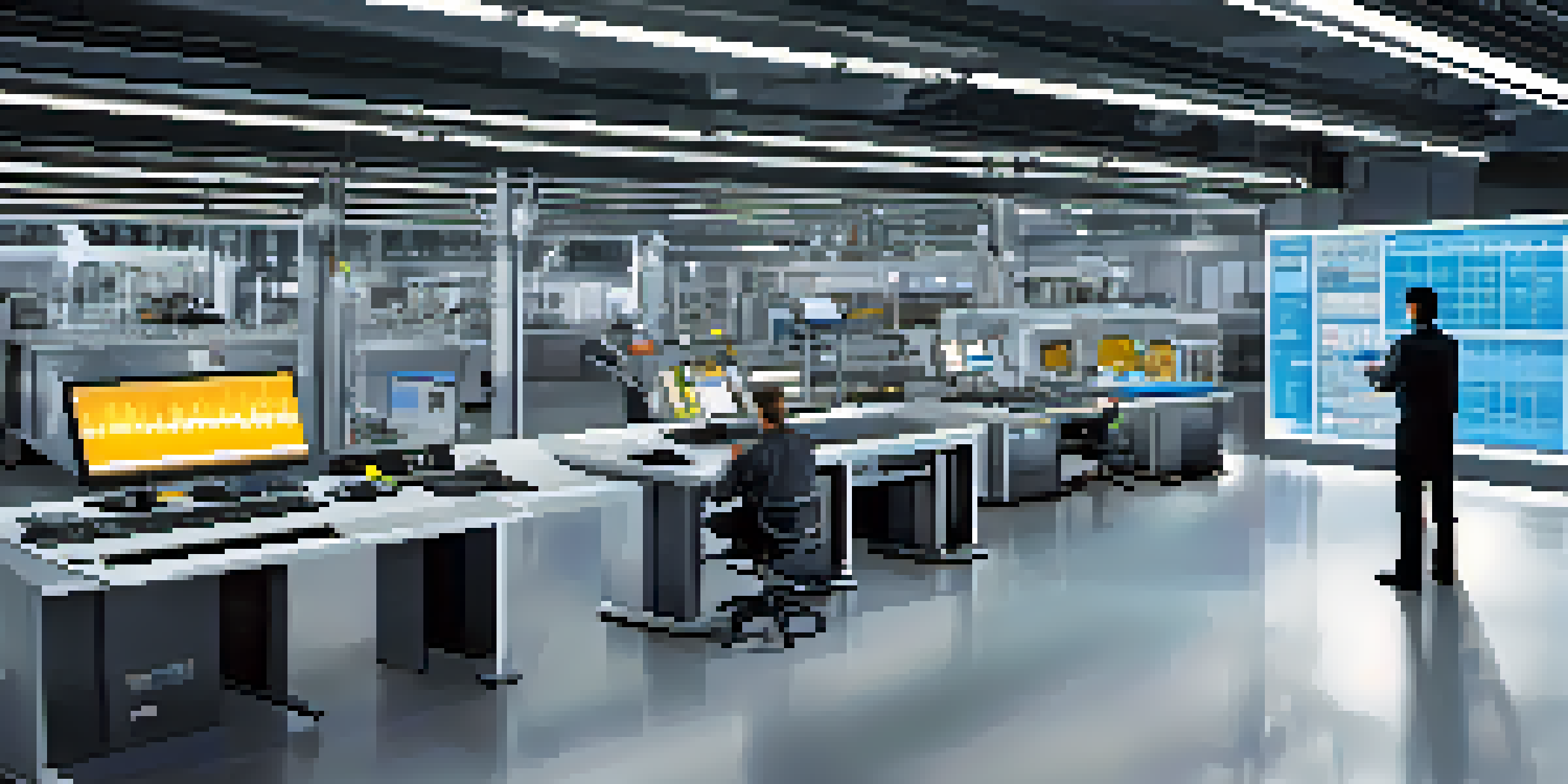How AI Predicts Equipment Maintenance Needs Accurately

Understanding Predictive Maintenance and AI's Role
Predictive maintenance is a proactive approach to manage equipment upkeep, aimed at predicting when maintenance should occur. It leverages data analysis to anticipate potential failures before they happen. By integrating artificial intelligence (AI), organizations can enhance their predictive maintenance strategies, making them more reliable and efficient.
The Data Behind AI Predictions
At the heart of AI's predictive capabilities lies data—lots of it. Sensors on equipment collect real-time data about performance metrics like temperature, vibration, and operating hours. This data is then fed into AI algorithms, which analyze historical patterns and detect anomalies that may indicate future maintenance needs.
AI Enhances Predictive Maintenance
By integrating AI, organizations can improve their predictive maintenance strategies, making them more reliable and efficient.
Machine Learning: The Key to Accurate Predictions
Machine learning, a subset of AI, plays a crucial role in refining predictive maintenance models. By using historical data, machine learning algorithms learn to identify patterns and trends that humans might miss. Over time, as more data is collected, these algorithms become increasingly accurate, enabling companies to anticipate maintenance needs with confidence.
Real-Time Monitoring and Alerts
One of the significant advantages of AI in predictive maintenance is real-time monitoring. AI systems continuously track equipment conditions and can send alerts if they detect anything unusual. This instant communication allows maintenance teams to act quickly, preventing costly downtime and extending the life of the equipment.
Real-Time Monitoring Prevents Downtime
AI systems provide continuous equipment monitoring and instant alerts, allowing teams to address issues swiftly and avoid costly downtime.
Case Studies: Success Stories with AI
Many companies have successfully implemented AI-driven predictive maintenance, leading to impressive results. For instance, a manufacturing plant reduced its downtime by 30% after adopting AI tools to monitor equipment health. These case studies illustrate not just the potential of AI but also its practical benefits in various industries.
Cost Savings Through Optimized Maintenance
AI's ability to predict maintenance needs accurately translates directly into cost savings. By addressing issues before they escalate, companies can avoid expensive repairs and unplanned outages. Moreover, optimized maintenance schedules help in resource allocation, ensuring that maintenance teams focus on the most critical tasks.
Cost Savings Through AI Predictions
Accurate predictions from AI lead to significant cost savings by enabling proactive maintenance and reducing unplanned repairs.
Challenges in Implementing AI Solutions
While the benefits are clear, implementing AI for predictive maintenance isn't without its challenges. Data quality and integration can pose significant hurdles, as can the need for skilled personnel to manage AI systems. Overcoming these challenges requires a strategic approach, including investment in training and infrastructure.
The Future of AI in Equipment Maintenance
Looking ahead, the role of AI in equipment maintenance is set to grow exponentially. As technology advances, we can expect even more sophisticated algorithms that provide deeper insights and improved predictions. Embracing these innovations will be essential for companies aiming to stay competitive in a rapidly evolving landscape.